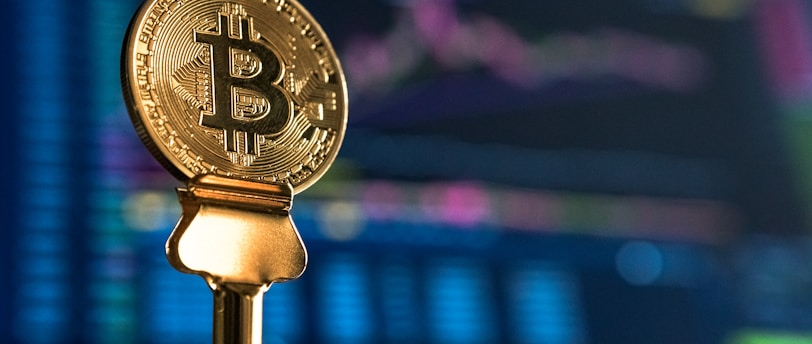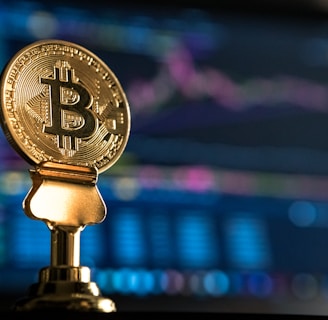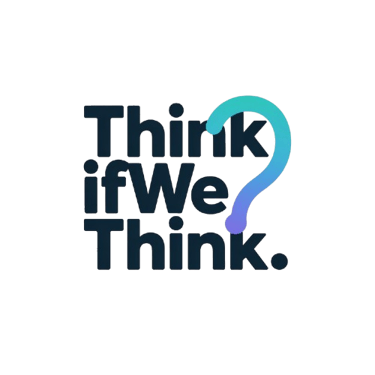Blockchain Explained Simply: What It Is, How It Works, and Why It Matters for Everyone
Discover blockchain in a fun, easy-to-understand way! Learn what blockchain is, how it works, and why it’s transforming money, food tracking, voting, and more. Perfect for beginners, with no tech background needed. Uncover real-world uses, bust myths, and explore the future of this game-changing technology!
TECHNOLOGY SIMPLIFIED
ThinkIfWeThink
5/5/202511 min read


What is Blockchain and How Does It Work?
Introduction: A Technology That’s Changing the World
Imagine you could send money to a friend halfway across the globe without a bank, and the transaction is safe, fast, and transparent. Or picture a system where your medical records are stored securely, only accessible to doctors you trust, with no risk of tampering. This isn’t a dream—it’s what blockchain technology can do.
You’ve probably heard of blockchain in connection with Bitcoin, but it’s so much more than just cryptocurrency. It’s a revolutionary way to store and share information that’s secure, open, and reliable. From tracking the journey of your groceries to ensuring fair elections, blockchain is popping up everywhere.
Sounds complicated, right? Don’t worry! This article will break it down into simple terms, so even if you’re not a tech wizard—or even if you’re a school kid—you’ll understand what blockchain is, how it works, and why it’s a big deal. Let’s dive in!
The Story Behind Blockchain: A Brief History
The blockchain story kicked off in 2008 when someone (or a group) using the name Satoshi Nakamoto published a paper called “Bitcoin: A Peer-to-Peer Electronic Cash System.” They wanted to create a digital currency that didn’t need banks or governments to work. To make this happen, they invented blockchain—a way to keep track of transactions that’s secure and doesn’t rely on one central authority.
In 2009, the first blockchain came to life with Bitcoin. It was like a digital ledger (think of an accountant’s record book) shared across thousands of computers. Every Bitcoin transaction was recorded in this ledger, and no one could change it without everyone noticing.
Fast forward to 2015, and a new platform called Ethereum took blockchain to the next level. It introduced “smart contracts,” which are like automatic agreements that run themselves when certain conditions are met (e.g., paying rent when a lease is signed). This opened the door to all sorts of new uses, from tracking products to managing digital art. Today, blockchain is a global phenomenon, with companies, governments, and even schools exploring its potential.
Why Blockchain Matters to You
You might be thinking, “Okay, but why should I care about blockchain?” Great question! Here are a few reasons it’s worth your attention:
Trust Without Middlemen: Blockchain lets you trust a system without needing a bank, government, or company to vouch for it. It’s like dealing directly with a friend, knowing they can’t cheat because everyone’s watching.
Saving Time and Money: By cutting out intermediaries, blockchain can make things like sending money overseas faster and cheaper. For example, it can turn a days-long bank transfer into a matter of minutes.
Protecting Your Data: In a world full of data breaches, blockchain offers a way to keep your information—like medical records or personal IDs—safe and under your control.
Shaping the Future: From voting to food safety, blockchain is being used in ways that affect everyday life. Understanding it helps you stay ahead in a tech-driven world.
Whether you’re a student, a parent, or just curious, blockchain is becoming part of our lives, and knowing about it gives you a head start.
Blockchain Made Simple: A Fun Analogy
Let’s make blockchain super easy to understand with an analogy. Picture a group of friends who love trading snacks at school. To keep things fair, they all carry identical notebooks where they write down every trade—like “Alice gave Bob an apple, Bob gave Charlie a cookie.” Whenever a trade happens, everyone updates their notebook, so all the notebooks match. If Charlie later says, “I never got that cookie,” the others can check their notebooks and prove he did.
Blockchain works the same way, but with computers instead of friends. These computers (called nodes) all keep a copy of a digital notebook (the blockchain ledger). When someone makes a transaction—like sending money or recording a sale—it’s written in the ledger, and every computer updates its copy. If someone tries to cheat by changing their copy, the other computers will notice because their copies don’t match. This makes blockchain super secure and trustworthy.
Key Features of Blockchain: What Makes It Special
Blockchain isn’t just a fancy database—it has unique features that set it apart. Here’s what makes it tick:
Decentralized: There’s no single boss in charge. Instead of one company or bank controlling the ledger, it’s shared across many computers worldwide. This makes it hard for anyone to mess with the system.
Transparent: On a public blockchain, anyone can see the transactions. It’s like a glass bank vault—everyone can look inside and verify what’s happening.
Unchangeable (Immutable): Once something is written in the blockchain, it’s locked in forever. Think of it like carving your name in wet cement—once it dries, it’s permanent.
Secure: Blockchain uses clever math (called cryptography) to protect data. Each transaction is like a locked box that only the right key can open.
Agreement-Based (Consensus): Before adding new information, the computers in the network must agree it’s valid. This ensures only accurate data gets recorded.
These features work together to make blockchain a powerful tool for trust and security.
How Blockchain Works: A Step-by-Step Guide
Now, let’s walk through how blockchain actually does its magic. Here’s the process in simple steps:
Someone Starts a Transaction: Let’s say you want to send digital money to a friend. You use a digital wallet (like an app) to say, “Send $10 to Sarah.”
The Network Hears It: Your transaction is sent to a network of computers (nodes) around the world.
Computers Check It: The nodes check if the transaction is legit—do you have $10? Is the request real? This step prevents cheating.
Grouping into a Block: Valid transactions are bundled together into a block, like putting several notes on one page of the notebook.
Locking the Block: To add the block to the blockchain, computers use a special process (like solving a puzzle) to create a unique code called a hash. This hash links the block to the previous one, forming a chain.
Adding to the Chain: Once the block is locked, it’s added to the blockchain, and every computer updates its copy of the ledger.
Done! The transaction is complete, and Sarah gets her $10. The record is now permanent and visible to everyone on the network.
The hash is like a digital fingerprint—unique to each block. If someone tries to change a block, the fingerprint won’t match, and the network will reject it. This keeps everything secure.
Example: Sending $100 via Blockchain
Let’s make it concrete with an example. Suppose Alice wants to send $100 worth of Bitcoin to Bob.
Alice opens her Bitcoin wallet app and enters Bob’s wallet address (like an email address for crypto) and the amount ($100 in Bitcoin).
She hits “send,” and the transaction is signed with her private key (a secret code only she knows) to prove it’s really her.
The transaction is sent to the Bitcoin network, where thousands of computers see it.
Special computers called miners check that Alice has enough Bitcoin and that the transaction follows the rules.
The miners group Alice’s transaction with others into a block.
To add the block, miners race to solve a tough math puzzle. The first to solve it locks the block with a hash and adds it to the blockchain.
Once the block is added, Bob sees the Bitcoin in his wallet, and the transaction is done. It’s now part of the permanent record.
This process takes about 10 minutes for Bitcoin, but other blockchains can be faster. The result? A secure, transparent transfer without a bank.
Mining: The Engine of Blockchain
You might have heard of “mining” in connection with Bitcoin. Let’s unpack what it is and why it matters.
What is Mining?
Mining is how some blockchains, like Bitcoin, add new blocks to the chain. Miners use powerful computers to solve complex math puzzles that verify transactions. The first miner to solve the puzzle gets to add the block and earns a reward, usually in cryptocurrency.
Why is Mining Needed?
Mining does two big jobs:
Checking Transactions: Miners make sure transactions are valid, preventing things like spending the same money twice.
Keeping Things Secure: Solving puzzles takes a lot of computer power, making it hard for bad actors to mess with the blockchain. To change a block, they’d need to outpower the entire network, which is nearly impossible.
Do All Blockchains Use Mining?
Nope! Bitcoin uses a system called Proof of Work (PoW), which relies on mining. But other blockchains, like Ethereum (since 2022), use Proof of Stake (PoS). In PoS, people “stake” their coins (like putting money in a savings account) to get a chance to validate transactions. It’s less energy-hungry than mining.
How Can You Mine?
To mine Bitcoin, you need:
Special Computers: Called ASICs, these are built just for mining and are super fast.
Mining Software: Programs that connect your computer to the blockchain network.
Lots of Electricity: Mining uses a ton of power, so cheap electricity helps.
But here’s the catch: mining is now so competitive that most people join “mining pools,” where they team up with others to share the work and rewards. It’s like joining a group to solve a giant puzzle together.
Real-World Uses: Blockchain Beyond Bitcoin
Blockchain started with cryptocurrencies, but it’s now used in all sorts of exciting ways. Here are some examples:
Money Transfers: Blockchain makes sending money across borders faster and cheaper. Companies like Ripple help banks move money in seconds, not days.
Supply Chains: Walmart uses blockchain to track food from farms to stores, ensuring it’s safe and fresh. If there’s a recall, they can pinpoint the source instantly.
Healthcare: Hospitals use blockchain to store patient records securely, so only authorized doctors can access them, reducing errors and breaches.
Voting: Blockchain can make elections more transparent and secure. Voatz has tested blockchain voting in some U.S. elections, letting people vote from their phones safely.
Digital Art (NFTs): Artists use blockchain to sell unique digital items, like artwork or music, as Non-Fungible Tokens (NFTs). Buyers know they own the real thing.
Real Estate: Blockchain simplifies buying homes by keeping ownership records clear and reducing paperwork. Companies like Propy are making this happen.
Identity Protection: Blockchain can give you a digital ID that’s secure and easy to verify, reducing identity theft.
These are just the start—blockchain’s potential is huge, and new uses are popping up all the time.
Why People Trust Blockchain
Blockchain earns trust for a few key reasons:
No Single Controller: Because it’s decentralized, no one person or company can manipulate the system. It’s like a democracy of computers.
Open to All: On public blockchains, anyone can check the records, so there’s no hiding shady deals.
Locked Tight: Once data is added, it’s permanent, thanks to those digital fingerprints (hashes). Changing it would require rewriting history across thousands of computers.
Math-Based Security: Cryptography (fancy math) ensures only the right people can make transactions, like a lock only your key can open.
This combination makes blockchain a “truth machine” for digital records, which is why it’s used for everything from money to medical data.
Limitations: What’s Holding Blockchain Back?
Blockchain isn’t perfect. Here are some challenges it faces:
Slow Speed: Blockchains like Bitcoin can only handle a few transactions per second, while credit card companies process thousands. This makes it hard to scale for big systems.
Energy Use: Mining for Proof of Work blockchains, like Bitcoin, uses as much electricity as some countries, raising environmental concerns.
Complexity: Blockchain can be hard to understand and use, which slows down adoption.
Unclear Rules: Governments are still figuring out how to regulate blockchain and cryptocurrencies, creating uncertainty.
Storage Issues: As blockchains grow, they need more storage space. Bitcoin’s ledger was over 600 gigabytes in 2024, which is a lot for regular computers.
Good news? People are working on fixes, like faster blockchains, energy-saving systems like Proof of Stake, and user-friendly apps.
Busting Myths About Blockchain
Let’s clear up some common misunderstandings:
“It’s Just for Cryptocurrencies”
Wrong! Blockchain powers supply chains, healthcare, voting, and more, as we’ve seen.“It’s Totally Anonymous”
Not quite. Transactions are linked to digital addresses, which can sometimes be traced. It’s more like using a nickname than being invisible.“It’s Unhackable”
The blockchain itself is very secure, but related systems, like wallets or apps, can be hacked if not protected properly.“It’ll Replace Everything”
Blockchain is great for some things, but it’s not the best tool for every job. Regular databases are still better for many tasks.
Understanding these myths helps you see blockchain for what it really is—a powerful but not magical technology.
Fun Facts to Wow Your Friends
First Ever Transaction: In 2009, Satoshi Nakamoto sent 10 Bitcoins to a coder named Hal Finney, the first real blockchain transaction.
Super Secure: The Bitcoin blockchain has never been hacked in over 15 years, though some apps using it have been.
Big Money: In 2023, all cryptocurrencies together were worth over $1 trillion—more than many countries’ economies!
Eco-Friendly Shift: Ethereum’s 2022 upgrade to Proof of Stake cut its energy use by 99%, showing blockchain can go green.
Country Adopters: El Salvador made Bitcoin legal money in 2021, letting people buy coffee with crypto.
Final Thoughts: Blockchain’s Bright Future
Blockchain is like the internet in its early days—full of promise but still figuring itself out. It’s already changing how we handle money, data, and trust, and its impact will only grow as it gets faster, greener, and easier to use. Whether you’re excited about buying digital art, tracking your food’s journey, or voting securely, blockchain is paving the way.
But a word of caution: while blockchain is powerful, it’s not a cure-all. Be wary of scams in the crypto world, and always research before investing or using new blockchain apps. Stay curious, stay safe, and keep exploring this amazing technology!
To dive deeper into another transformative technology, check out this beginner-friendly guide on Artificial Intelligence: Learn how AI works, its real-world applications, and its impact on our future!
FAQ: Understanding Blockchain in Simple Terms
1. What is blockchain in simple words?
Blockchain is a secure, shared digital record (like a notebook) that stores transactions across many computers. It’s transparent, tamper-proof, and doesn’t need a central authority like a bank. Think of it as a group of friends keeping identical copies of a trade log to ensure no one cheats.
2. How does blockchain work?
When you make a transaction (like sending money), it’s sent to a network of computers. They verify it, group it with other transactions into a “block,” and lock it with a unique code (hash). This block is added to a chain of previous blocks, creating a permanent, unchangeable record.
3. Why is blockchain important?
Blockchain builds trust without middlemen, making things like money transfers, supply chain tracking, and data storage faster, cheaper, and safer. It’s used for cryptocurrencies like Bitcoin, but also for voting, healthcare, and more, impacting everyday life.
4. What is mining in blockchain?
Mining is how some blockchains (like Bitcoin) verify transactions and add new blocks. Miners use powerful computers to solve math puzzles, ensuring transactions are legit. They’re rewarded with cryptocurrency. Not all blockchains use mining—some use less energy-intensive methods.
5. Is blockchain only for cryptocurrencies?
No! While it started with Bitcoin, blockchain is used for tracking food from farms to stores, securing medical records, enabling secure voting, selling digital art (NFTs), and even simplifying real estate deals.
6. Is blockchain secure?
Yes, blockchain is very secure due to its decentralized nature, unchangeable records, and cryptography (fancy math). Once data is added, it’s nearly impossible to alter without the entire network noticing. However, related apps or wallets can be vulnerable if not protected.
7. Can anyone use blockchain?
Absolutely! You can use blockchain through apps like cryptocurrency wallets, NFT marketplaces, or even voting platforms. You don’t need to be a tech expert—many platforms are user-friendly for beginners.
8. What are the downsides of blockchain?
Blockchain can be slow (handling fewer transactions than traditional systems), energy-intensive (for some like Bitcoin), and complex to understand. Regulations are also unclear, and storing large blockchains requires significant space.
9. How does blockchain save money?
By cutting out middlemen like banks or brokers, blockchain reduces fees and speeds up processes like international money transfers or contract agreements. This makes transactions cheaper and faster.
10. Is blockchain the future?
Blockchain has huge potential to transform industries like finance, healthcare, and supply chains. While it’s not perfect and faces challenges, ongoing improvements (like energy-efficient systems) suggest it will play a big role in the future.
Further Reading
Want to learn more? Check out these resources:
Investopedia: Blockchain Facts
IBM: What is Blockchain?
McKinsey: What is Blockchain Technology?
Built In: 17 Blockchain Applications

Get in touch
Learn
Explore topics made easy for everyone here.
Share
© 2025. All rights reserved.
